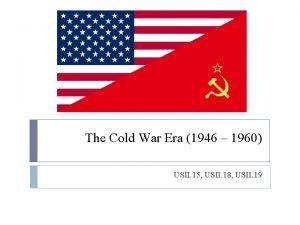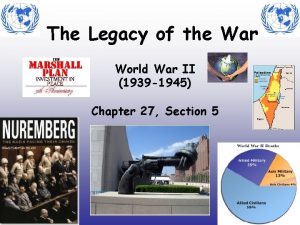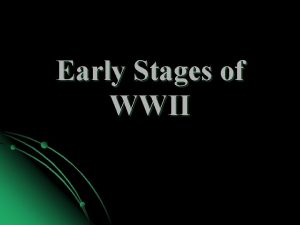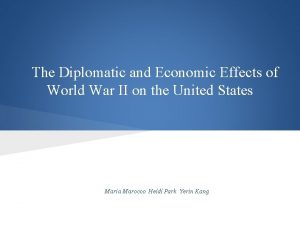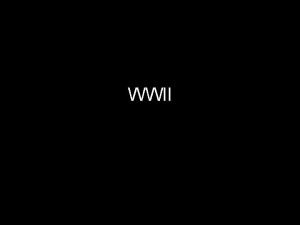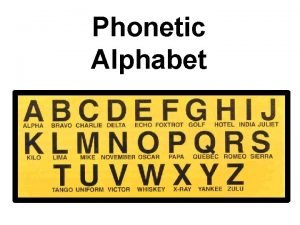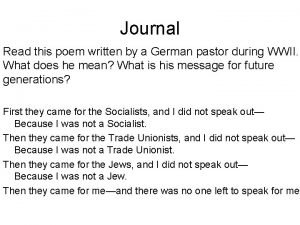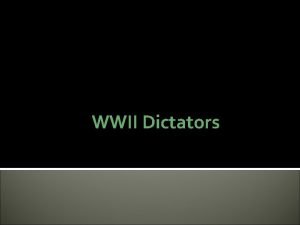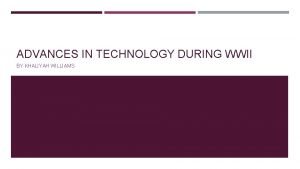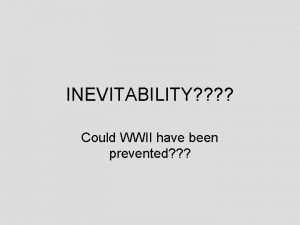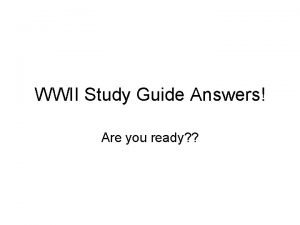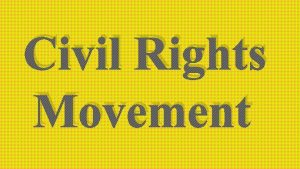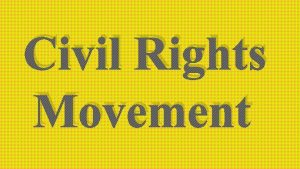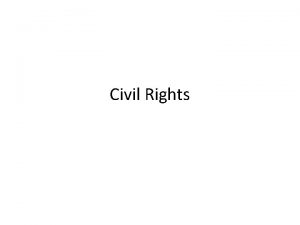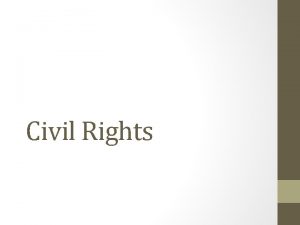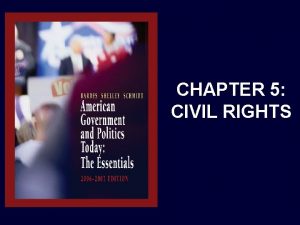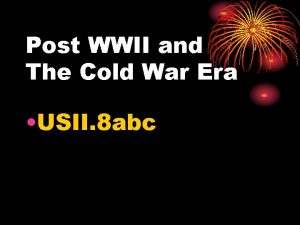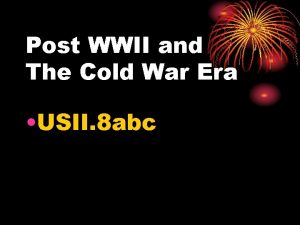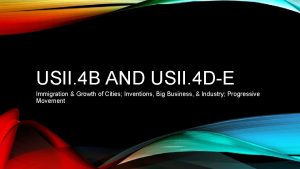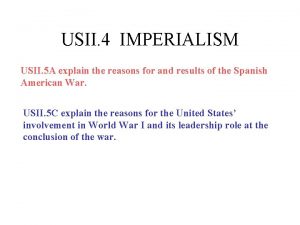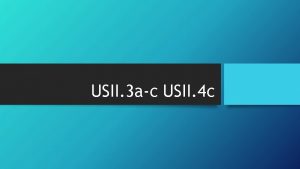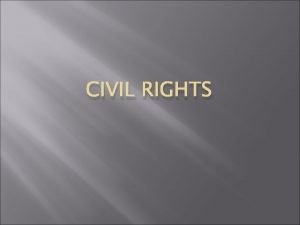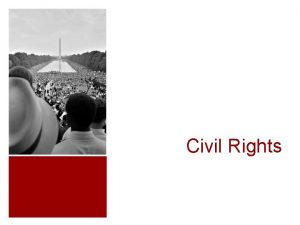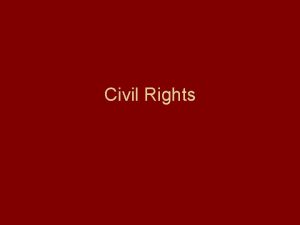USII 7 8 POST WWII CIVIL RIGHTS USII

















- Slides: 17

USII. 7 & 8 POST WWII & CIVIL RIGHTS USII. 7 A describe the rebuilding of Europe and Japan after World War II, the emergence of the United States as a superpower, and the establishment of the United Nations. USII. 7 B describe the conversion from wartime to a peacetime economy. USII. 7 C identify the role of America’s military and veterans in defending freedom during the Cold War, including the wars in Korea and Vietnam, the Cuban Missile Crisis, the collapse of communism in Europe, and the rise of new challenges. USII. 7 D describe the changing patterns of society, including expanded educational economic opportunities for military veterans, women, and minorities.

USII. 8 A examine the Civil Rights Movement and the changing role of women. USII. 8 B describe the development of new technologies and their impact on American life.

USII. 7 A-D MODERN AMERICA From WWII until today “Somewhere Out There” (1)

USII. 7 A “German Polka” (2)

USII. 7 B

THE COLD WAR • “a state of tension between the U. S. and the Soviet Union without actual fighting that divided the world into two camps” • Causes: – Differences in goals and ideologies between the super powers (US=democratic & capitalist; USSR=dictatorial & communist) – USSR dominated Eastern Europe – US policy of “containment” – NATO vs. Warsaw Pact Russian National Anthem USII. 7 C

USII. 7 C MAJOR CONFLICTS • Korean War (1950) – North Korea backed by China invaded South Korea backed by the US & United Nations – War ended in a stalemate with a truce • Cuban Missile Crisis (1962) – USSR placed missiles in Cuba aimed at the U. S. – US blockaded Cuba & Soviets removed missiles • Vietnam War (1957) – US intervened due to “Domino Theory” – Anti-war riots in the US – Cease-fire agreement and the US withdrew its troops “Aquarius” (4)


USII. 7 C (Map) P’yongyang Korean War 38 th Parallel Pusan Inchon Yalu River Seoul UN

USII. 7 C (MAP) VIETNAM WAR DMZ Gulf of Tonkin Resolution Haiphong Harbor Hanoi Saigon Paris Peace Talks Tet Offensive Mr. Johnson’s War Ho Chi Minh Trail Hawks Doves Green Berets

USII. 7 C COLLAPSE OF COMMUNISM IN EUROPE Breakup of the Soviet Union into independent countries. Destruction of the Berlin Wall “Walkin the Floor Over You” (2) NEW CHALLENGES 1. Role of U. S. military intervention 2. Environmental challenges 3. Global issues, including trade, jobs, diseases

USII. 7 D FACTORS LEADING TO CHANGING PATTERNS IN THE U. S. • Strong economy (healthy job market, increased productivity, increased demand for US goods) • Greater investment in education • “The Baby Boom” • Interstate Highway System • Evolving role of women • Role of Eleanor Roosevelt in expanding women’s rights • African Americans’ desire for equal opportunities • New immigrants after 1965 (Hispanic & Asian)

EXPANSION OF EDUCATIONAL AND EMPLOYMENT OPPORTUNITIES • G. I. Bill of Rights – gave educational, housing, and employment benefits to World War II veterans • Truman desegregated the armed forces • Civil Rights legislation – Increased educational, economic, and political opportunities for women and minorities “Those Were the Days” (3) USII. 7 D

USII. 8 A CIVIL RIGHTS • Effects of Segregation – Separate schools – Separate public facilities – Social Isolation of races • Civil Rights Movement: – – – – Plessy v. Ferguson (Separate but Equal) Brown v. Board of Education (desegregated) Martin L. King – Passive Resistance; “I have a dream…” Rosa Parks – Montgomery bus boycott Freedom riders, sit-ins, marches NAACP Civil Rights Act of 1964 Voting Rights Act of 1965

USII. 8 A Changing Role of Women • Workplace – discrimination in hiring; low wages • NOW (National Organization of Women) • Federal laws to support women’s athletics • Equal Rights Amendment (failed) “Suffrage” (click)

USII. 8 B NEW TECHNOLOGIES • Airlines – jet • Automobiles – interstate highways • Entertainment & news media • Space exploration • Computers • Satellite systems – pagers, cell phones, television • Internet “Electric Slide” (2)

• • • IMPACT OF NEW TECHNOLOGIES Increased travel for business & pleasure Greater access to news (live) Cheaper & convenient communication Greater access to heating and air conditioning Decreased regional variation (fewer differences) USII. 8 B
 Usii
Usii Civil rights and civil liberties webquest
Civil rights and civil liberties webquest What caused ww2
What caused ww2 What was the nye committee
What was the nye committee Apush wwii dbq
Apush wwii dbq Effect
Effect German map 1938
German map 1938 Wwii picture
Wwii picture 1950s television history
1950s television history Phonetic alphabet letters
Phonetic alphabet letters Wwii
Wwii Wwii picture
Wwii picture Wwii
Wwii Advances in technology during wwii
Advances in technology during wwii Wwii test review
Wwii test review Could wwii have been prevented
Could wwii have been prevented Ww2 study guide answer key
Ww2 study guide answer key Mother of the modern day civil rights movement
Mother of the modern day civil rights movement
